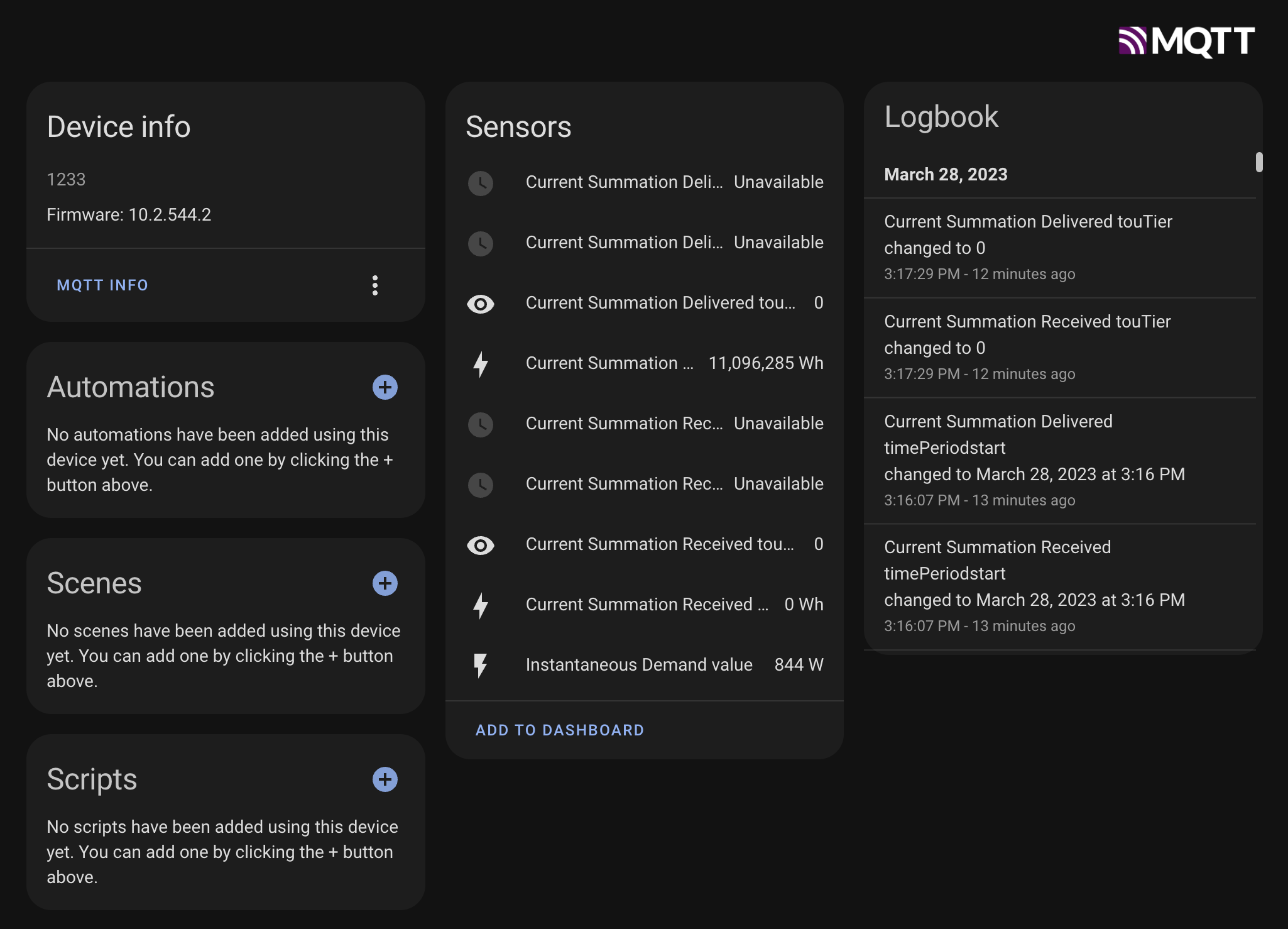Recently Xcel energy rolled out smart meter installations to facilitate TOU(Time of Use) pricing. This also benefits us, the users, as it provides us with a free way to see how much energy we're using at any time. This repo will help you get up and running with a python program that will query your meter on your network and convert its readings to MQTT messages.
Enroll in Xcel enery launchpad and get your meter joined to your network.
Generate an SSL key to use to provide a handshake to your meter, and add this to your Xcel launchpad
./scripts/generate_keys.sh
This script will generate new keys and print out the LFDI string to use for registering with Xcel. If you're already generated keys and you need to retrieve the LFDI string again run:
./scripts/generate_keys.sh -p
These keys will be saved in the local directory certs/.cert.pem and certs/.key.pem
Pull from remote (easy)
docker pull ghcr.io/zaknye/xcel_itron2mqtt:main
or (harder)
Build the container locally.
./scripts/docker-build.sh
Then run the container using the required options below.
The following are options that may be passed into the container in the form of environment variables or required volumes.
| Option | Expected Arg | Optional |
|---|---|---|
| -v <path_to_cert_folder>:/opt/xcel_itron2mqtt/.certs | Folder path to the certs generated with the generate keys script | NO |
| -e MQTT_SERVER | IP address of the MQTT server to communicate with | NO |
| -e MQTT_PORT | Port # of the MQTT server to communicate with, Default: 1883 | yes |
| -e METER_IP | IP address of the itron meter. Useful for those that run iot devices on other vlans | yes |
| -e METER_PORT | Port number of the meter, must be set if METER_IP is set. |
yes |
| -e MQTT_USER | Username to authenticate to the MQTT server | yes |
| -e MQTT_PASSWORD | Password to authenticate to the MQTT server | yes |
| -e CERT_PATH | Path to cert file (within the container) if different than the default | yes |
| -e KEY_PATH | Path to key file (within the container) if different than the default | yes |
Docker compose is the easiest way to integrate this repo in with your other services. Below is an example of how to use compose to integrate with a mosquitto MQTT broker container.
xcel_itron2mqtt:
image: xcel_itron2mqtt
restart: unless-stopped
volumes:
- ~/xcel_itron2mqtt/certs:/opt/xcel_itron2mqtt/certs
networks:
- main
links:
- mosquitto
environment:
- MQTT_SERVER=mosquitto
docker run --rm -d \
--net host \
-e MQTT_SERVER=<IP_ADDRESS> \
-v <path_to_cert_folder>:/opt/xcel_itron2mqtt/certs \
xcel_itron2mqtt:latest
The easiest way currently to pass through mDNS to the container is to use host networking.
Maybe in the future use https://github.com/flungo-docker/avahi
For running as a developer, the following is helpful to allow you to work in the container
docker run --rm -it \
--net host \
-v `pwd`:/opt/xcel_itron2mqtt \
--entrypoint /bin/bash \
xcel_itron2mqtt:latest
Please feel free to create an issue with a feature request, bug, or any other comments you have on the software found here.
To contribute code, create a new fork, then create a pull request once your new feature/fix is complete.
Zak Nye - zaknye.com - zaknye@gmail.com
